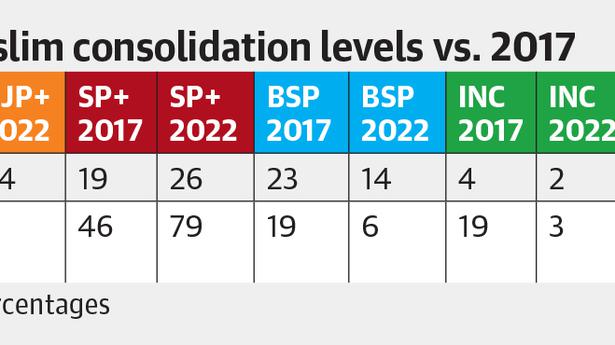
Religious polarisation and electoral choices
The Hindu
BJP secured a little over half the Hindu vote and the SP one-fourth
Different shades of religious polarisation were reflected in the CSDS-Lokniti post-poll survey in Uttar Pradesh.
During the campaign for the State Assembly election, there was an animated debate on the ‘80:20 factor’. Did this election see any major religious polarisation in the State? One preliminary caveat that needs to be added to this discussion, is the clear bipolar contest that the State witnessed.
Never before has the electoral result involved two major players sharing over 95% of the seats. This factor needs to be the context in which the data flowing from the survey on the nature and intensity of religious polarisation needs to be assessed.
If the vote share of the 80% Hindu community voters is taken into account, the BJP secured a little over half the Hindu vote (54%) and the Samajwadi Party (SP) polled one-fourth of the Hindu vote (26%) (Table 1).
This time around, in light of the bipolar contest, both parties polled seven percentage points higher votes among Hindus as compared to the 2017 polls. Among the 20% Muslim vote, the SP secured close to eight of every 10 votes (79%), an increase from close to half the votes in 2017. The BJP secured a little less than one of every 10 Muslim votes (8%), a marginal increase from 2017. Thus while half the Hindu vote was garnered by the BJP, the Samajwadi party secured over three-fourths of the Muslim vote.
How did the Hindu and Muslim vote trend in constituencies which had a significant Muslim presence? In constituencies which accounted for between 20-39% of Muslim population, the BJP secured close to six of every 10 (59%) Hindu votes (Table 2).
The consolidation of the Hindu vote for the BJP was much stronger when it came to constituencies with more than 40% of Muslim population.











